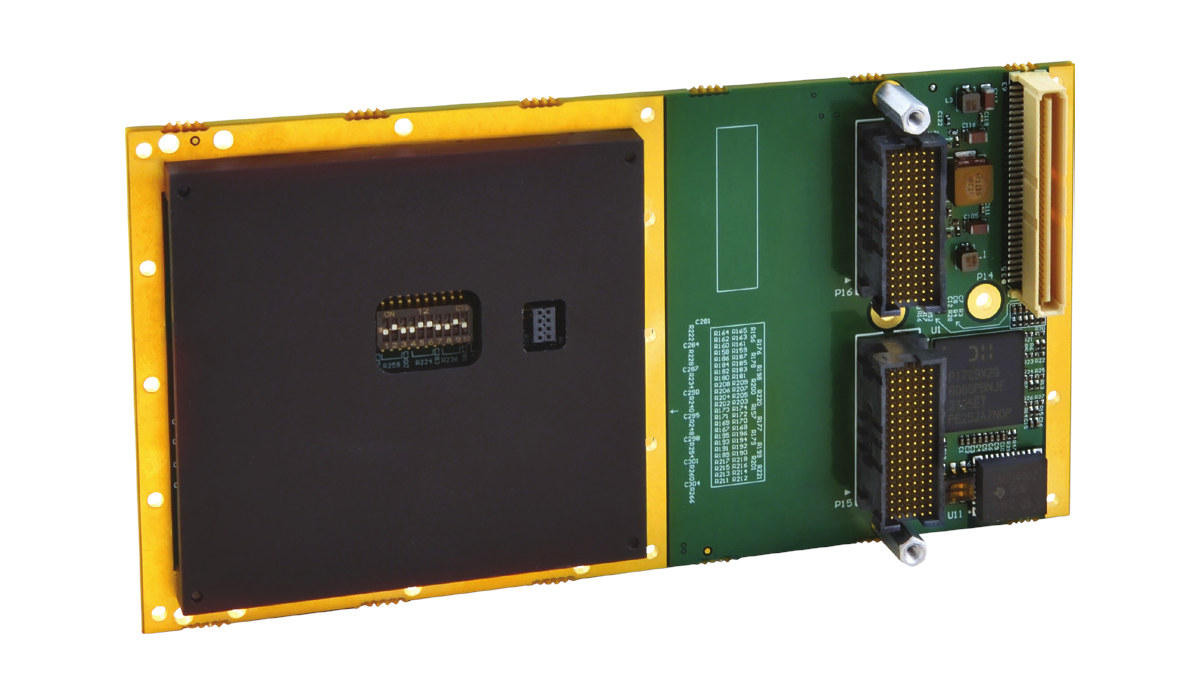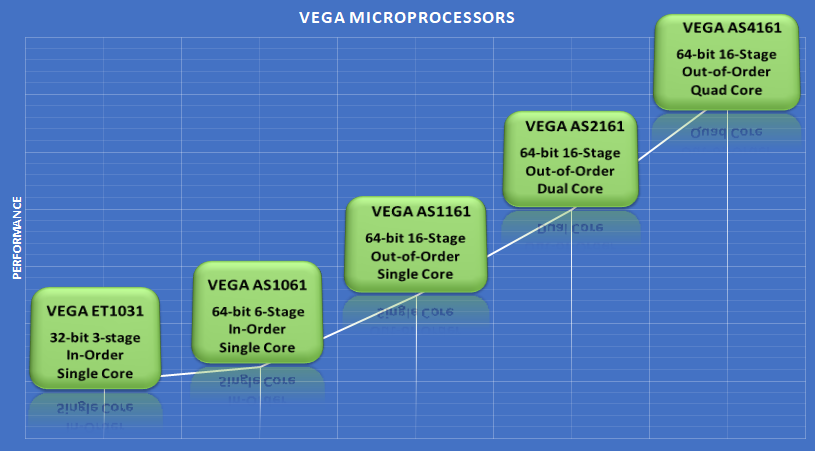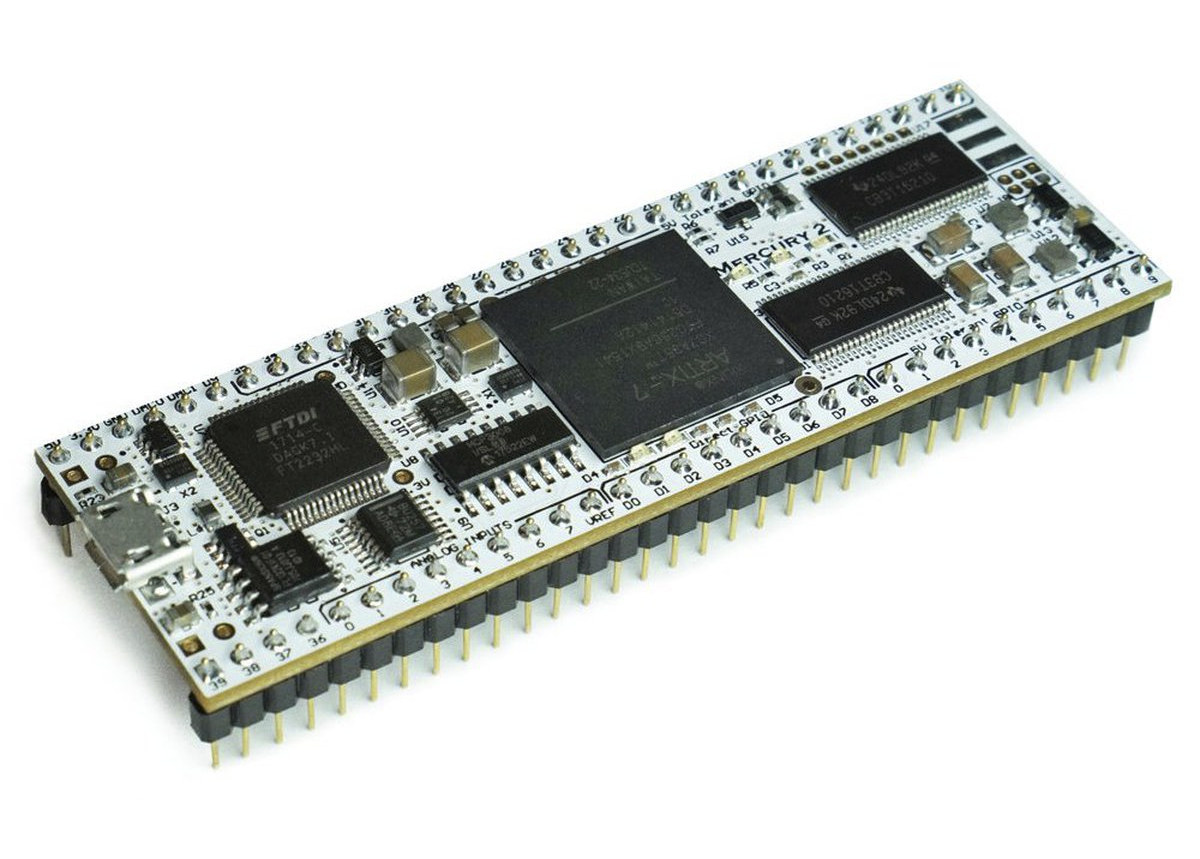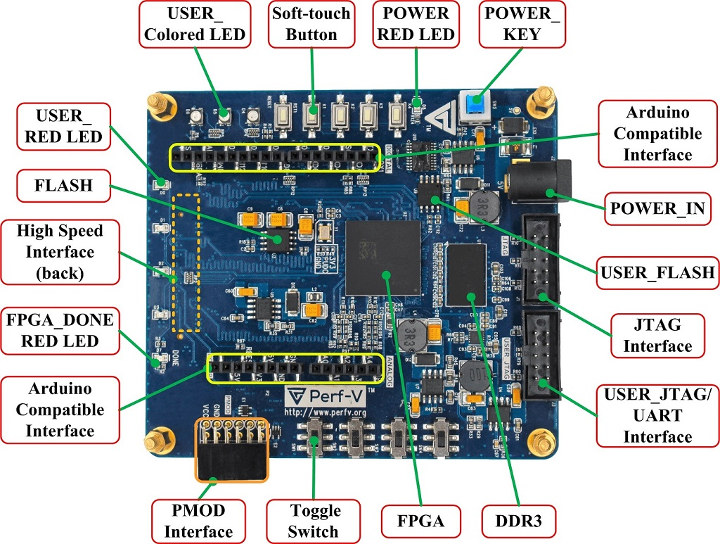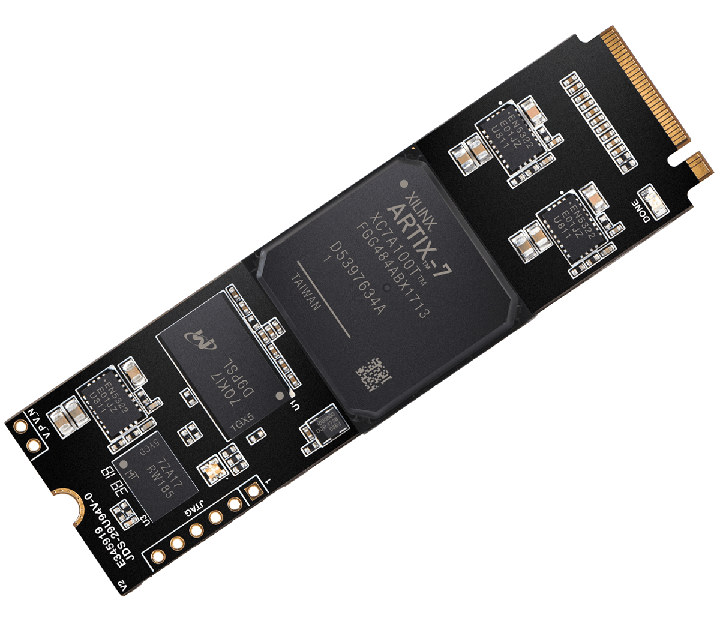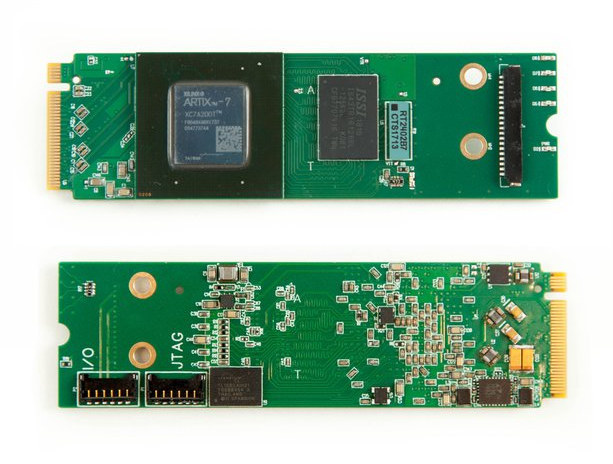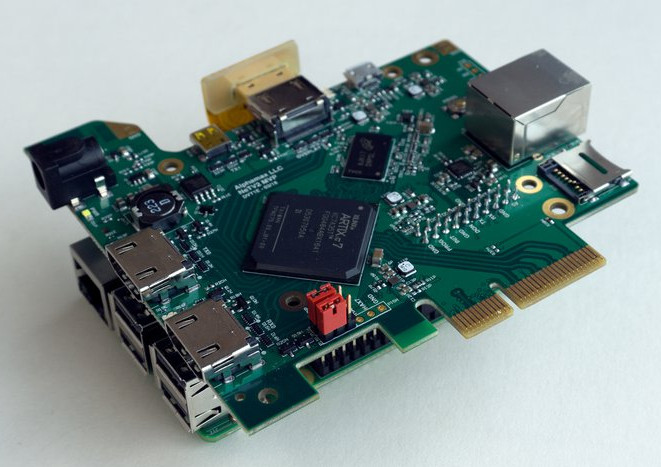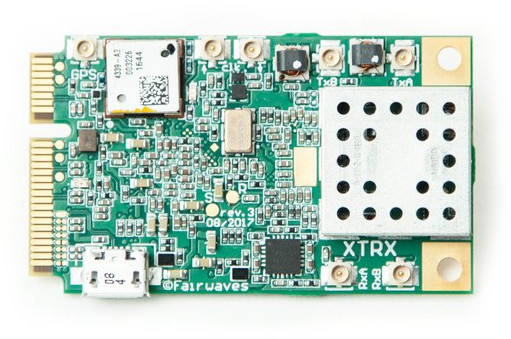Acromag XMC-7A50-AP323 is an XMC (Switched Mezzanine Card) module based on a Xilinx Artix-7 FPGA with 48 TTL I/O channels plus a 16-bit ADC for 20 differential or 40 single-ended analog inputs. Designed for commercial off-the-shelf (COSTS) applications, Acromag XMC modules are RoHS compliant, and suitable for automation applications, scientific development labs, as well as aerospace and military applications. Acromag XMC-7A50-AP323 module specifications: FPGA – AMD Xilinx Artix-7 (XC7A050) FPGA with 52,160 logic cells, 65,200 Flip flops, 2,700 kb block RAM, 120 DSP slices Storage – 32Mbit QSPI flash memory FPGA Digital I/O 48x I/O channels controlled in groups of eight channels, 5V tolerant TTL, RS485, and LVDS interface options: Build Option A: 24x EIA-485/422 channels Build Option B: 24x TTL and 12x EIA-485/422 channels Build Option C: 24x LVDS channels Analog Input 20 differential or 40 single-ended inputs Flexible scan control 16-bit A/D resolution 8μs conversion time FIFO buffer […]
India goes RISC-V with VEGA processors
One of the main advantages of RISC-V architecture is that it is open, so any organization with the right skills can develop its own cores, and India’s government has taken up this opportunity with the Microprocessor Development Programme (MDP) helping develop VEGA RISC-V cores locally. Thanks to funding by the Ministry of Electronics and Information Technology (MeitY), the Centre for Development of Advanced Computing (C-DAC) managed to design five RISC-V processors ranging from a single-core 32-bit RISC-V microcontroller-class processor to a Linux capable quad-core 64-bit out-of-order processor. Key features of the five VEGA cores developed by the C-DAC: VEGA ET1031 – 32-bit single-core 3-stage in-order RV32IM processor with AHB/AXI4.bus, optional MMU, optional Debug VEGA AS1061 – 64-bit single-core 6-stage in-order RV64IMAFDC processor with 8KB D-cache, 8KB I-cache, FPU, AHB/AXI4 bus VEGA AS1161 – 64-bit single-core 16-stage pipeline out-of-order RV64IMAFDC processor with 32KB D-cache, 32KB I-cache, FPU, AHB/AXI4/ACE bus VEGA AS2161 […]
FPGA Meets Breadboard with Mercury 2 Xilinx Artix-7 FPGA Development Board
While we now come across more and more FPGA development boards, very few are designed to be inserted into a breadboard. We’ve previously covered TinyFPGA BX, Fipsy, and QuickFeather FPGA breadboard-friendly boards. All those boards are however based on entry-level FPGAs like Lattice Semi ICE40 or QuickLogic EOS S3, and if you’d like a more powerful FPGA board that fits into a breadboard, MicroNova Mercury 2 development board may meet your requirements with a Xilinx Artix-7 FPGA. MicroNova Mercury 2 specifications: FPGA – Xilinx Artix-7A FPGA (XC7A35T) with 33,280 logic cells or XC7A100T with 101,440 logic cells System Memory – 4 Mbit (512K x 8-bit) asynchronous SRAM Storage – 32 Mbit SPI flash for configuration & user data Networking – On-board Microchip LAN8720A 10/100M Ethernet PHY USB – Dual-channel high-speed USB 2.0 micro USB port (ch A for config, ch B for user) 2x 32-pin headers Fast Ethernet signals 8-channel, […]
Perf-V is another FPGA based RISC-V Development Board
There are already some RISC-V development boards with silicon featuring RISC-V instruction set such as SiFive’s HiFive1 or Kendryte KD233 board. But beauty of RISC-V is that you can customize the instructions set, and if that’s your goal, an FPGA board provides the flexibility you need. While in theory you could use pretty much any FPGA board with enough logic elements, it may help to get started with boards that are designed for this purpose since the company already ported a RISC-V core to their platform and you can start from there. We’ve already covered a few of those including LicheeTang and Fomu boards, as well as ARIES M100PF PolarFire FPGA system-on-module. Today, I’ve come across another of those RISC-V FPGA board. Meet Perf-V board with the following specifications: FPGA – Xilinx Artix-7 XC7A35T-1FTG256C with 33280 Logic Cells, 90 DSP, 41600 CLBs, 1800 Kbit Block RAM, and 5 CMTs; Optional […]
Aller Artix-7 FPGA Board with M.2 Interface Fits into a Laptop
A few days ago, we wrote about Nitefury M.2 card equipped with a Xilinx Artix-7 FPGA, and which you can connect to any laptop, board, a computer with a spare M.2 socket. It turns out Numato Lab has done something similar with the Aller board, specifically designed for development and integration of FPGA based accelerated features into other larger designs, and provided in a standard 2280 M.2 form factor M-key slot. Aller FPGA M.2 card key features & specifications: FPGA- Xilinx Artix-7 FPGA (XC7A100T-1FGG484C) with 101,440 Logic cells, ~126K Flip-flops, ~600KiB Block RAM, and 240 DSP slices System Memory – 2Gbit DDR3 (MT41J128M16JT-125:KTR) Storage – On-board 1Gb QSPI flash memory for FPGA configuration Host Interface – 4 lane PCIe Gen1 (2.5GT/s) via M.2 Connector Interface, M-Key Debugging – JTAG header for programming and debugging Security – 1x Trusted Platform Module (AT97SC3205) Misc – 100 MHZ CMOS oscillator, 1x RGB LED […]
NiteFury Puts Xilinx Artix-7 FPGA into an M.2 Card (Crowdfunding)
NiteFury is an FPGA development board, but it works differently than most, as RHS Research LLC put a Xilinx Artix-7 FPGA into an M.2 Key M card that you can easily insert into a laptop or mini PC with a 80mm M.2 socket. The board also includes DDR3 memory, and exposes a few configurable I/Os. You can use NiteFury to experiment with Xilinx PCIe IP, but also as FPGA co-processor for example to handle encryption, and encoding/decoding data. NiteFury card specifications: FPGA – Xilinx Artix XC7A200T-2FBG484E delivering up to ~1000 GMAC/s, with 215,360 Logic cells, 33,650 Slices, 269,200 CLB flip-flops, and 740 DSP slices. System Memory – 8 Gbit DDR3 (512 MB x 16) Host Interface – PCIe 4x gen 2 (2 Gb/s) External I/Os Via I/O connectors – 12x I/O including 4x selectable analog or digital – JTAG ready Via PCIe connector – 1x 3.3 V digital I/O (LED), […]
NeTV2 Open Video Development Board Works with Encrypted and Unencrypted Video Streams (Crowdfunding)
Chumby NeTV was an open source hardware Linux IPTV media player based on a Xilinx Spartan FPGA and a Marvell Armada 166 processor, and unveiled in 2011. Many years have passed since then, and now Bunnie Huang has come up with a new version. The NeTV2 development board is also optimized for open digital video application, but based on a more powerful Xilinx Artik-7 FPGA, and a Raspberry Pi 3 B+ can be added for things like seamless JTAG configuration and overlay video generation. Key features and specifications: FPGA – Xilinx Artik-7 XC7A35T-2FGG484 (available with XC7A50T option during campaign only) System Memory – 512 MB RAM, 32-bit wide DDR3-800 Storage – micro SD card, 8 MB SPI flash Video Ports 2x HDMI type A inputs 1 x HDMI type A output 1 x HDMI type D output. One input/output pair configured for in-line ‘NeTV mode’ video filtering. Max Video Bandwidth […]
XTRX SDR Mini PCIe Card Supports 10 MHz to 3.8 GHz Tuning Range, up to 120 MSPS Sample Rate
Fairwaves is a startup that aims to make deploying and operating mobile networks in rural regions profitable, and their latest project is called XTRX, a high performance Software Defined Radio (SDR) board packed into a mini PCIe card form factor. The project was launched on Crowdsupply earlier with year, got fully funded by around 700 backers, and the company is now working on fulfilling backers rewards by the end of August. XTRX board specifications: RF Chipset – Lime Microsystems LMS7002M FPRF (as found in LimeSDR Mini) FPGA Chipset – Xilinx Artix 7 35T RF Channels – 2 × 2 MIMO Sample Rate – ~0.2 MSPS to 120 MSPS SISO / 90 MSPS MIMO Tuning Range: 30 MHz – 3.8 GHz Rx/Tx Range: 10 MHz – 3.7 GHz 100 kHz – 3.8 GHz with signal level degradation PCIe Bandwidth PCIe x2 Gen 2.0 up to 8 Gbit/s PCIe x1 Gen 2.0 […]


